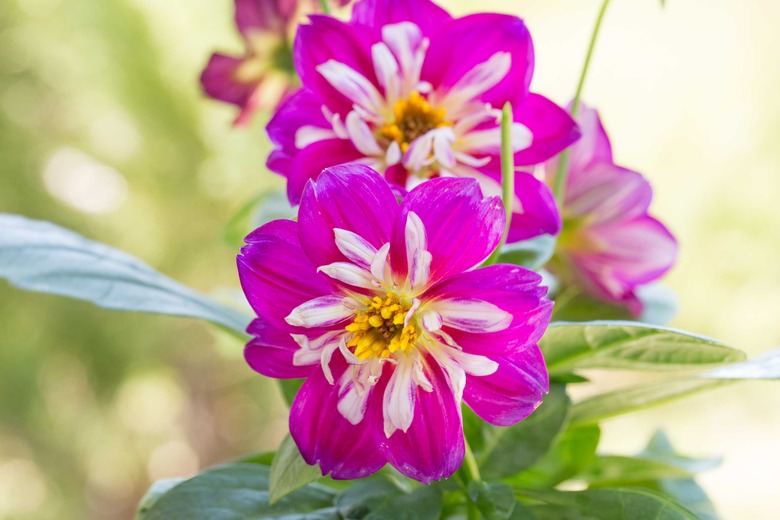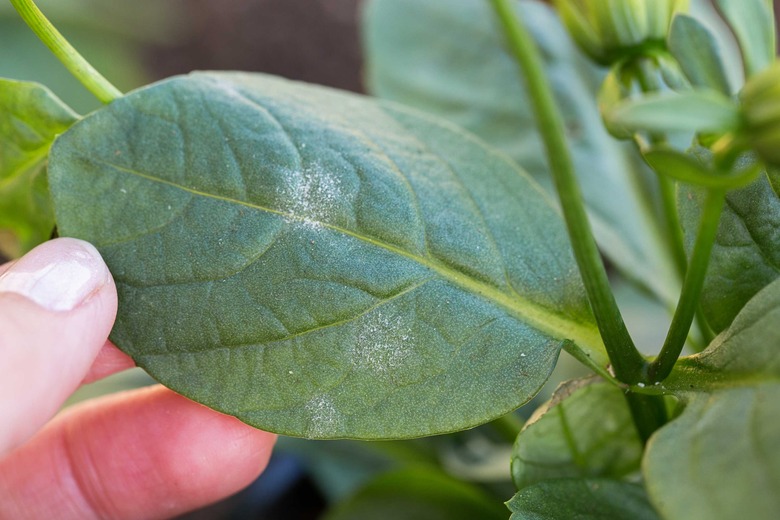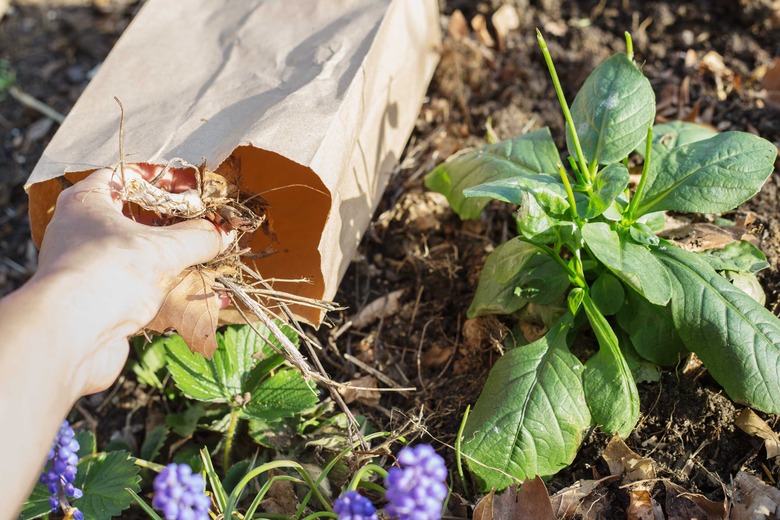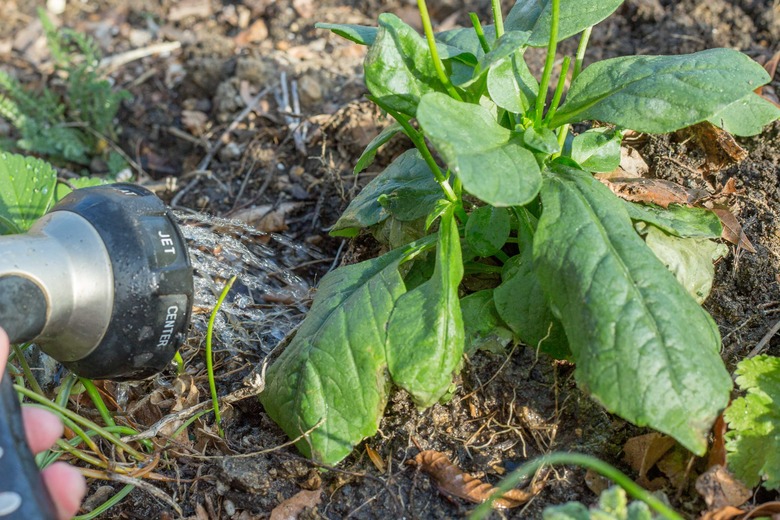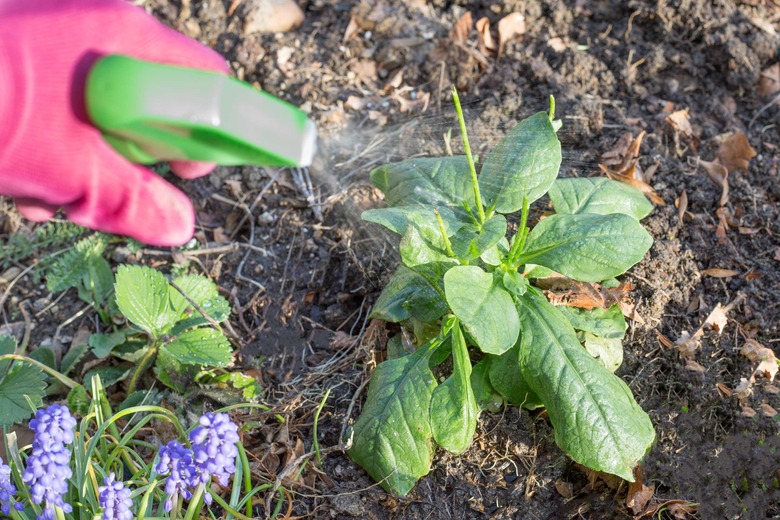Cures For Mold On Dahlia Leaves
Dahlia (Dahlia spp.) is not above getting infected with fungus. Specifically, dahlia leaves may become mottled with mold for two reasons: Botrytis cinerea or powdery mildew. Knowing the type of fungus the dahlia is infected with is the first step in curing it. After identifying the type of fungus, use a combination of good care and the right remedy to restore your dahlia to full health.
Identifying the Mold
Botrytis cinerea, commonly called gray mold, is aptly named for the woolly, gray mold spores that spread atop masses of brown, water-soaked spots. The dahlia's petals are more likely to be covered by gray mold than leaves, but leaves may be infected if they are injured, dead or growing directly from a food base such as a fallen petal. If the leaves are covered in a dry, white mold, chances are they are infected with powdery mildew, not gray mold. Powdery mildew grows on older leaves and stems, and may cause the leaves to become discolored and die. Unlike gray mold, it does not need moisture to germinate, and it does not cause brown, water-soaked spots.
Removing Plant Debris
Reducing the amount of decaying plant matter the fungus has access to will help prevent and control gray mold and powdery mildew. Tend to the dahlia plants when they're dry because it helps prevent fungal spores from spreading. Destroy any plant debris — including faded flowers and dead leaves — infected with any fungus, and discard them in a paper bag to be thrown out with the trash. For plants infected with gray mold, you may have to clip off entire plants at the base. Clipping off entire plants is not necessary for powdery mildew, but infected leaves should be clipped off.
Reducing Moisture
Gray mold spores need free moisture to germinate and infect, and while it is not needed for powdery mildew to survive, it still helps promote its rapid growth. Lowering the amount of moisture may help halt or dramatically slow down the growth of the fungi. To reduce moisture, avoid getting the dahlia plant leaves wet when you water, and water the plant early in the day so it will be dry by the evening. Dahlias only need a deep soaking about once a week, or twice a week if they are not mulched.
Fungicides
If applied when symptoms first arise, fungicides may help prevent gray mold and powdery mildew from spreading. Chlorothalonil is a fungicide that is effective against gray mold and powdery mildew. Mixing and application instructions vary depending on the brand of chlorothalonil. For example, when using 29.6 percent chlorothalonil, mix 2 teaspoons in 1 gallon of water in a garden sprayer, and coat the dahlia with it in a fine mist every seven to 14 days, until the weather is no longer favorable for the fungus. Wear protective eyewear, gloves, pants and a long-sleeved shirt while handling the fungicide, and be careful not to inhale the mist. Keep children and pets out of the area until the spray has dried.
References
- Penn State Extension: Dahlia Diseases
- University of California Statewide Integrated Pest Management Program: Dahlia
- University of California Statewide Integrated Pest Management Program: Gray Mold
- University of California Statewide Integrated Pest Management Program: Powdery Mildew
- Clemson Cooperative Extension: Powdery Mildew
- Clemson Cooperative Extension: Gray Mold (Botrytis Blight)
- University of Georgia Cooperative Extension: Dahlias
- The Old Farmer's Almanac: Dahlias
